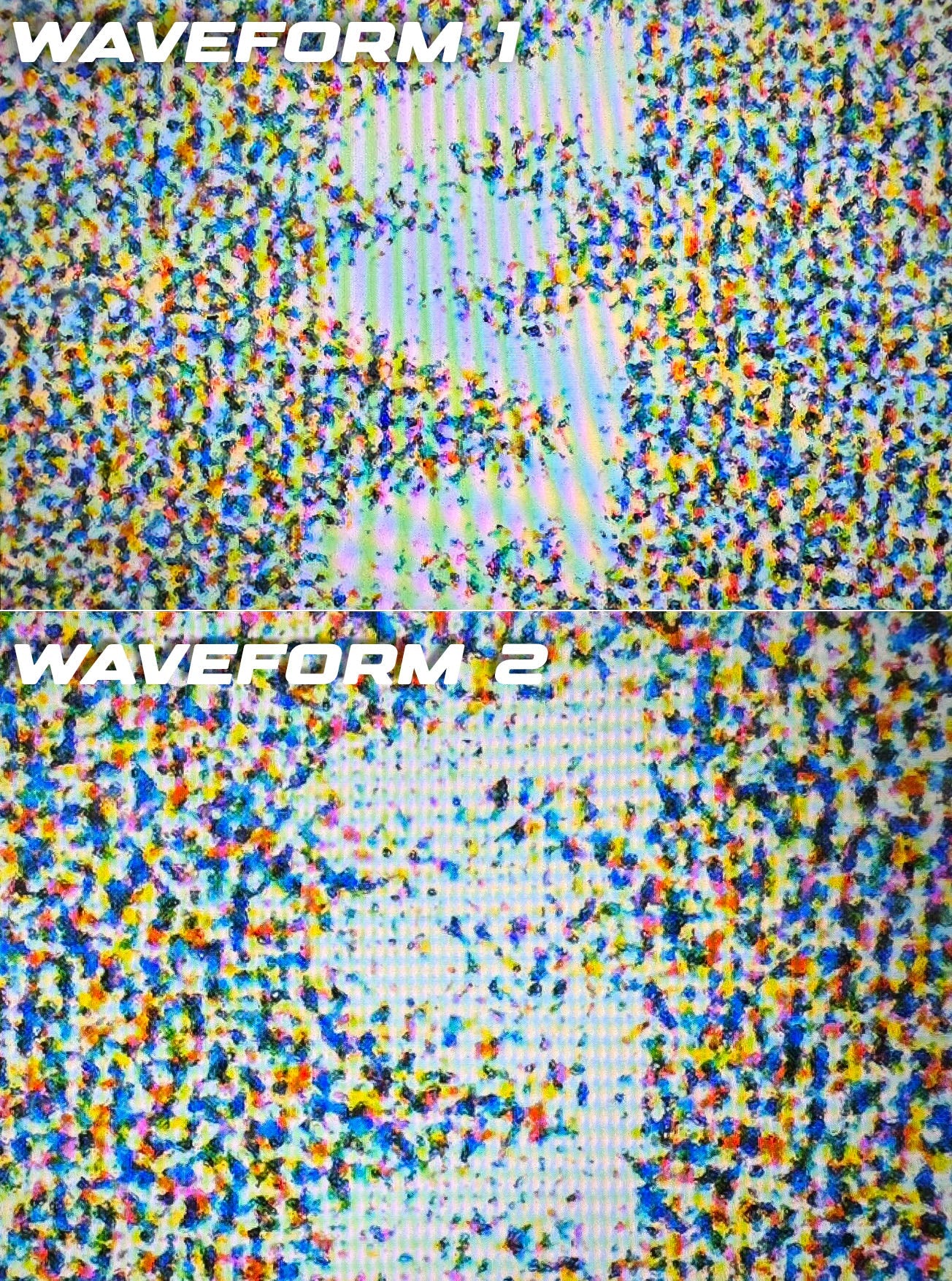Call Us (855) 374-7216

Why Waveforms Matter in Direct to Film Printing
In Direct-to-Film (DTF) digital printing, waveforms are critical for controlling the inkjet printhead's operation, directly impacting print quality, ink delivery, and dot size. Here's a concise explanation:
Why Waveforms Matter
Waveforms are electrical signals sent to the printhead that control the piezoelectric actuators, which eject ink droplets. Precise waveform tuning ensures:
- Consistent Ink Ejection: Optimizes droplet formation for sharp, vibrant prints.
- Print Quality: Prevents issues like satellites (unwanted ink splatter) or inconsistent dots, ensuring crisp images and text.
- Ink Efficiency: Reduces waste by controlling droplet size and placement.
- Printhead Longevity: Proper waveforms minimize strain on the printhead, reducing wear.
How Waveforms Control Dot Sizes
Waveforms dictate the size, shape, and velocity of ink droplets, which determine dot size on the film:
- Voltage and Pulse Timing: The waveform's amplitude (voltage) and duration control how much ink is pushed out. Higher voltage or longer pulses create larger droplets, resulting in bigger dots.
- Droplet Formation: Waveforms shape the ink meniscus in the nozzle, allowing precise control over droplet volume (e.g., small, medium, large dots for variable-dot printing).
- Multi-Pulse Waveforms: Advanced waveforms use multiple pulses to fire variable-sized droplets in a single cycle, enabling finer details or denser ink coverage.
- Ink Type Adaptation: Waveforms are tuned for DTF inks (especially thick white ink) to prevent clogging and ensure smooth flow, adjusting for viscosity and pigment density.
Impact on DTF Printing
- Detail and Gradients: Smaller dots (from shorter, lower-voltage pulses) enhance fine details and smooth gradients, critical for high-resolution designs.
- Color Vibrancy: Larger dots (from higher-voltage pulses) increase ink density for bold colors and opaque white layers.
- Consistency: Optimized waveforms reduce banding and streaking, ensuring uniform prints on film for transfer.
Note: Waveform settings are typically configured in the printer’s control software ( PrintEXP ) and must be calibrated for specific inks, printheads, and substrates to achieve optimal results.


Leave a comment